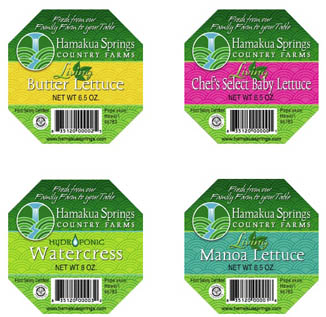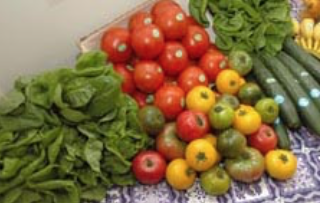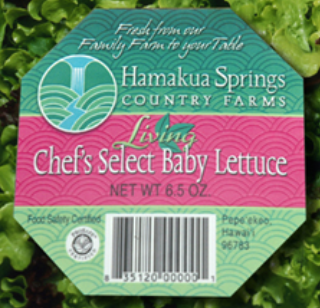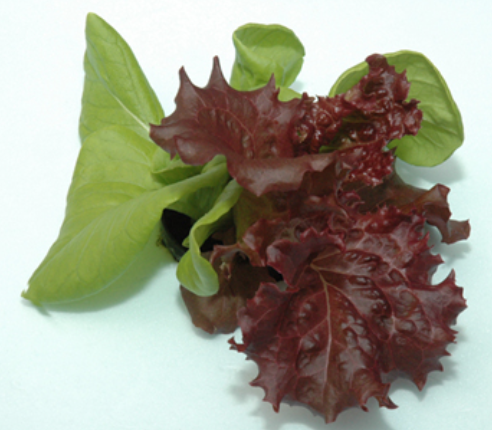Our friend Sonia Martinez writes wonderful articles about food for the Hamakua Times, and last year she wrote this nice article about Richard and the farm. She generously offered to allow us to post this article on the website, and as it makes its way to the website we thought we’d share it here with you, too.
We were pleased but not surprised to learn that Sonia’s cookbook “Tropical Taste” was recently selected as one of the “Best of the Best of Hawaii” cookbooks, by the way. We highly recommend it! It makes a great, local-flavor gift, too. It’s available in Hilo at Basically Books, the Book Gallery and the Most Irresistible Shop, and coming soon to amazon.com.
Here’s the article:
TROPICAL TASTE
By Sonia Martinez
May 2005 – The Hamakua Times of Honoka’a
Meet Richard Ha, tomato farmer
If you have forgotten what tomatoes really are supposed to taste like, you have to taste one of Richard’s tomatoes to bring the memory back. There is nothing of the odorless, light pink, thick fleshed, hardly any juice, cardboard taste and feel we have grown accustomed to seeing in the markets and restaurants to any of these tomatoes, regardless of the variety you try.
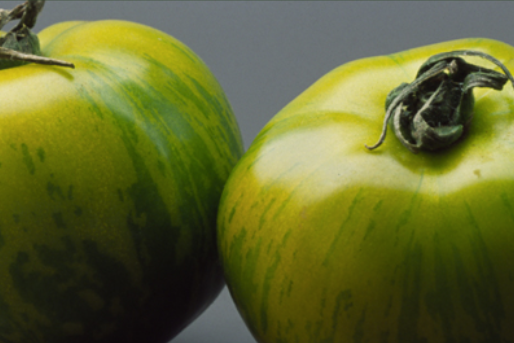
Long known for his bananas, papayas and oranges, Richard Ha and his family have embraced tomato growing in just the last two years. The Pepeekeo farm started out with a couple of experimental hydroponics greenhouses and now they number over a hundred.
Just a few weeks ago I was invited to a visual as well as a tasting treat.
The impressive display of tomatoes being grown and packed on premises is already mind-boggling.
Walking through the rows of vines laden with beautiful fruit and smelling the aroma of real vine-ripened tomatoes is a treat to the senses. Cocktail tomatoes, beef tomatoes, grape tomatoes, mini-Romas, tomatoes-on-the-vine, Green Zebras and other heirloom varieties such as Brandywine and in colors ranging from red to yellow to even green with green stripes are just some of the varieties now being grown.
Now operating under the name Hamakua Springs Country Farms, the Ha family has been dedicating their lives to farming for over 50 years and hope to continue for at least a 100 years more. Working as a family unit, Richard, wife June, mother Florence, daughter Tracy and son-in-law Kimo Pa will ensure that the next generations will continue in the tradition of the earlier Ha family.
Look for the Ha family’s tomatoes at your favorite grocers in clear clamshell containers with the attractive label and logo designed by Nelson Makua of Hilo.
Chef Alan Wong of Alan Wong’s Restaurant and The Pineapple Room in Honolulu has chosen the Ha Family tomatoes to feature in his restaurants. I was recently surprised and pleased to read an interview with Chef Alan that appeared in my copy of the March-April 2005 issue of Produce Concepts, a mainland publication where Chef Wong extols the taste of the Hamakua Springs Country Farms tomatoes.
During a recent visit to the Ha farm in Pepeekeo, Chef Alan and his crew of chefs delighted everyone with a presentation of several dishes using the farm’s tomatoes and cucumbers.
Given a box with an assortment of tomatoes, the first thing I did on returning home was to make a simple sandwich with bread, mayo, a thick slice of ripe Brandywine, a chiffonade of basil leaves and a light sprinkle of freshly ground pepper. The tasty juices literally ran down my hand as I ate it. It really doesn’t get any better than that!
Tomato Quiche
Serves 8
Crust of your choice
Rough Country Style Mustard
1 teaspoon olive oil
1 cup coarsely chopped fresh mushrooms (about 4 ounces)
3/4 cup chopped green onions (5-7 medium)
2 medium cloves garlic, minced
12 mini-Roma tomatoes or other ripe fresh tomatoes, thickly sliced
2 Tablespoons freshly grated Parmesan cheese
3 eggs or equivalent in egg substitute
2/3 cup or 5-ounce can fat-free evaporated milk
1 Tablespoon fresh chopped dill or 1 teaspoon dried, crumbled
1/4 teaspoon pepper
Preheat oven to 400o F.
Prepare crust by brushing lightly with a coating of the mustard.
Set aside until ready to fill.
For filling, heat oil in a medium nonstick skillet over medium-high heat, swirling to coat bottom. Sauté mushrooms, green onions, and garlic for 2 to 3 minutes, or until tender.
Arrange tomato slices on crust, cover with mushroom mixture, and sprinkle with Parmesan.
In a medium bowl, whisk together remaining ingredients. Pour over vegetables.
Bake for 40 to 45 minutes, or until a knife inserted in center comes out clean.
Rustic Herbed Tomato Tart with Parmesan Crust
Source: Intimate Gatherings by Ellen Rose
Pastry:
1 1/2 cups all purpose flour
1/2 cup (1 stick) unsalted cold butter, cut into 5 pieces
1/2 teaspoon salt
1/2 cup freshly grated Parmesan
Zest from 1/2 lemon
1/4 cup ice cold water
Filling:
1 1/2 – 2 Tablespoons Dijon mustard
2 Tablespoons freshly grated Parmesan cheese
2 Tablespoons finely chopped fresh basil
1 Tablespoon finely chopped fresh thyme
1 Tablespoon freshly chopped fresh Italian Parsley
2 cloves garlic minced
Salt and pepper to taste
6-8 ripe tomatoes (about 1 -1/4 pounds) cut into 1/4 inch thick slices
1 Tablespoon olive oil
1 egg yolk beaten with 1 teaspoon water
To prepare pastry:
In food processor fitted with metal blade, combine flour, butter, salt, and Parmesan. Pulse until it resembles coarse meal, about 5-10 seconds with motor running, add lemon zest and pour water through feeder tube in steady stream.
Process 5-10 seconds until dough begins to bind. Remove dough and shape it into a 12-inch circle.
If mixing by hand or with pastry blender cut butter into the flour and salt until it reaches size of small peas. Add zest and Parmesan cheese and combine.
Slowly add ice water stirring with fork until dough starts holding together.
If not used right away, dough can be wrapped in plastic and refrigerated.
When ready to use remove and let soften to room temperature, about 30 minutes, then shape into a 12-inch circle.
Preheat oven to 425o F.
Transfer the dough to a baking sheet. Using pastry brush paint pastry with mustard leaving 1 to 1-1/2 inch border all around. Sprinkle Parmesan cheese evenly over mustard.
In small bowl combine basil, thyme, parsley, garlic, salt and pepper.
Arrange 1/2 tomato slices over must coated portion of pastry and sprinkle with herbs. Cover herbs with remaining tomatoes overlapping slices if necessary. Drizzle olive oil over tomatoes.
Fold the rim of pastry over the tomatoes to enclose sides of tart, gently draping pastry over and folding it into soft pleats every few inches. Pinch cracks to seal and prevent juices from running out during baking. Paint dough with egg wash. Bake 20-25 minutes. Let cool about 10 minutes. Slice and serve warm.
Almost Instant Heirloom Tomato Relish
A recipe recently shared by my friend Evie in California. Original source:
Chef Warren Schwartz of Saddle Peak Lodge in Calabasas, CA. Food & Wine August
2004. Yields 1-12 cups
2 pounds heirloom tomatoes, peeled, seeded and cut into small dice.
2 Tablespoons Champagne vinegar or white wine vinegar
2 Tablespoons sugar
Salt and freshly ground pepper
2 Tablespoons extra-virgin olive oil
1/4 cup finely shredded basil leaves
Heat a large skillet. Add the tomatoes and cook over high heat until sizzling, about 1 minute. Add the vinegar and sugar and a pinch each of salt and pepper and bring to a boil; transfer the tomatoes to a bowl, leaving the juices in the skillet. Boil the juices over high heat until reduced to 1/4 cup, about 5 minutes. Stir the juices, olive oil and basil into the tomatoes and season with salt and pepper. Serve warm or at room temperature.
Make ahead: The relish can be refrigerated for up to 3 days. Let return to room temp before serving.
Aloha nui!
Sonia




